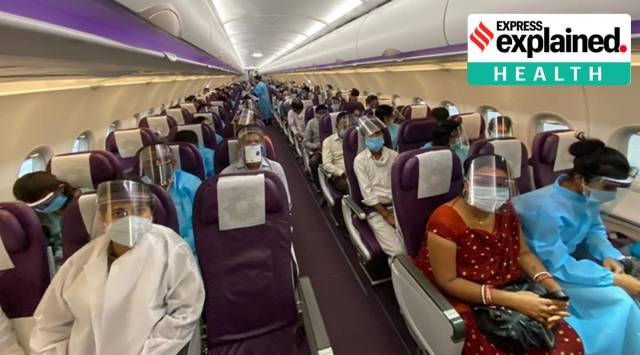Kaunain Sheriff M is an award-winning investigative journalist and the National Health Editor at The Indian Express. He is the author of Johnson & Johnson Files: The Indian Secrets of a Global Giant, an investigation into one of the world’s most powerful pharmaceutical companies. With over a decade of experience, Kaunain brings deep expertise in three areas of investigative journalism: law, health, and data. He currently leads The Indian Express newsroom’s in-depth coverage of health. His work has earned some of the most prestigious honours in journalism, including the Ramnath Goenka Award for Excellence in Journalism, the Society of Publishers in Asia (SOPA) Award, and the Mumbai Press Club’s Red Ink Award. Kaunain has also collaborated on major global investigations. He was part of the Implant Files project with the International Consortium of Investigative Journalists (ICIJ), which exposed malpractices in the medical device industry across the world. He also contributed to an international investigation that uncovered how a Chinese big-data firm was monitoring thousands of prominent Indian individuals and institutions in real time. Over the years, he has reported on several high-profile criminal trials, including the Hashimpura massacre, the 2G spectrum scam, and the coal block allocation case. Within The Indian Express, he has been honoured three times with the Indian Express Excellence Award for his investigations—on the anti-Sikh riots, the Vyapam exam scam, and the abuse of the National Security Act in Uttar Pradesh. ... Read More
Explained: Why has Centre asked Maharashtra to revise guidelines for international travellers?
The Centre stated that Maharashtra’s guidelines are divergent from the rules laid down by the Health Ministry. How are they different?
 Maharashtra has asked for mandatory RT-PCR tests for all international travellers, irrespective of their country of origin, arriving at the Mumbai airport.
Maharashtra has asked for mandatory RT-PCR tests for all international travellers, irrespective of their country of origin, arriving at the Mumbai airport. The Centre on Wednesday asked the Maharashtra government to revise its guidelines for international travellers to ensure that an uniform standard operating procedure (SOP), according to the rules laid down by the Union Health Ministry, is followed by all states.
On Sunday, the Health Ministry had revised the guidelines for international travel in view of the threat posed by the Omicron variant of Covid-19. The Centre, earlier in the day, stated that Maharashtra’s guidelines are divergent from the rules laid down by the Health Ministry and underlined that it is important for all states to follow the guidelines as laid down by the Centre.
How are Maharashtra’s rules different from the Centre’s guidelines?
Union Health Secretary Rajesh Bhushan on Wednesday flagged four specific guidelines of the Maharashtra government that are different from the Centre’s SOP.
Maharashtra has asked for mandatory RT-PCR tests for all international travellers, irrespective of country of origin, arriving at the Mumbai airport. It has also called for a mandatory 14-day home quarantine for all international passengers, even if they test negative on RT-PCR upon arrival.
Moreover, it has called for mandatory RT-PCR tests for passengers planning to undertake connecting flights after disembarking at Mumbai. Further travel is subject to a negative RT-PCR result.
The state has also asked all passengers coming to Maharashtra from other states to carry with them negative RT-PCR reports with the tests having been conducted at least 48 hours before their journey.
All these rules are different from the guidelines as laid down by the Health Ministry.
What are the Health Ministry guidelines applicable from today?
According to the Centre’s guidelines, international travellers coming in from “at risk” countries will have to strictly follow five specific steps:
* First, they have to submit samples for a Covid-19 test after arriving at the airport. These travellers will be required to wait for their test results at the arrival airport before leaving or taking a connecting flight.
* People who test negative will have to be in home quarantine for seven days. They will have to get tested again on the eighth day. If they test negative, they will have to self-monitor their health conditions for the next seven days.
* For all people who test positive, their samples will be sent for genomic testing at INSACOG laboratories.
* People who test positive will have to remain at a separate isolation facility and be treated as per standard protocols, including contact tracing.
* All people who had come in contact with those who test positive have to be kept in institutional quarantine or at home quarantine. They will be monitored strictly by the concerned state government as per protocols.
Which are the countries that have been listed under the ‘at risk’ category?
The Centre has listed 11 countries under this category. They are the UK, South Africa, Brazil, Botswana, China, Mauritius, New Zealand, Zimbabwe, Singapore, Hong Kong and Israel.
What are the rules for travellers coming in from other countries?
Travellers from other countries will be allowed to leave the airport. They have to self-monitor their health conditions for 14 days after arrival.
However, 5% of the total passengers on a flight will have to undergo random testing after arriving at the airport.
If passengers who remain in home quarantine later develop symptoms or test positive, they will have to immediately self-isolate and report to their nearest health facility.
Newsletter | Click to get the day’s best explainers in your inbox







































